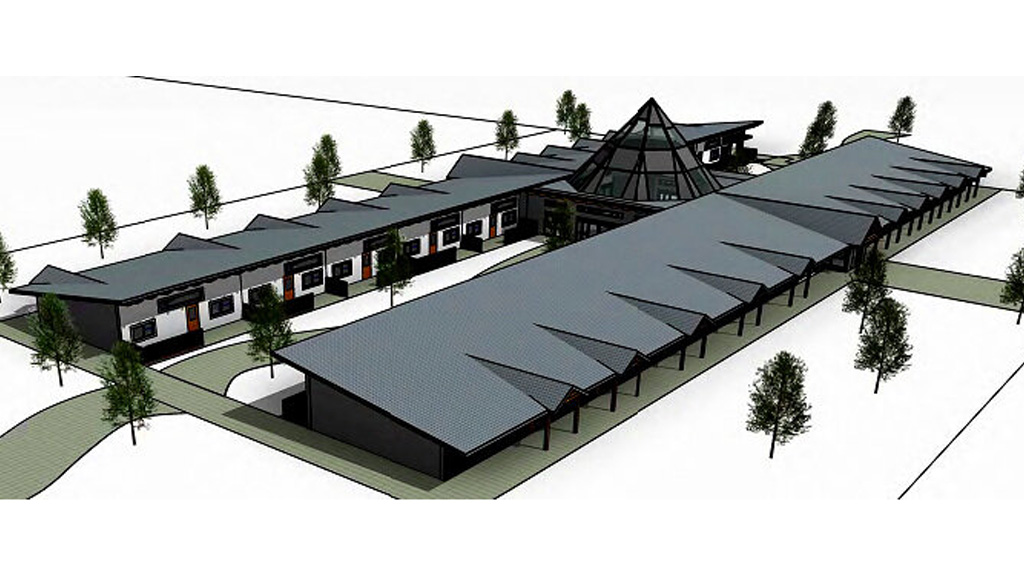The Roots to Roofs Community Development Society is moving reconciliation forward by collaborating with Indigenous communities on housing, planning and skills training.
“We are like a consultancy, but we’re a resources group. We operate on a different basis where we are not just about trying to build housing for folks,” said Larissa Stendie, co-principal at Roots to Roofs, during a seminar on truth and reconciliation.
A non-profit based in B.C., the organization is working to bring a hyper-local, context driven approach to planning and housing development in Indigenous communities.
Stendie said housing is a basic form of human dignity and a human right, as well as the “social determinant of health.”
“Without shelter you’re not going to be able to get a job, you’re not going to be able to maintain your health,” she said.
“Shelter is the thing that grounds us.”
Stendie said housing development needs to be driven by humanity, community and efficiency instead of profit.
One of Roots to Roofs’ focuses is developing aging in place housing for Indigenous Elders.
“In communities that are a bit remote, when Elders need more care, they sometimes have to travel hundreds of kilometres to get into care homes,” she said.
“That loss of those Elders from communities is profound.”
Stendie described the problems of a one-size-fits-all approach, where local characteristics and needs were not considered when housing was built on Indigenous reserves.
She spoke of the “Calgary Special,” a housing model that was built identically for Indigenous communities across Canada regardless of local climate and community needs.
“It didn’t matter if you were way high in the Arctic or you were on the West Coast, you were getting the Calgary split level,” said Stendie.
She said the houses were modelled so that upon entering an individual either had to ascend or descend a flight of stairs – a poor design for aging communities.
“You had houses that were potentially moldy on the wet West Coast before they were even closed.”
Stendie compared the history of housing development on reserves with residential school buildings.
“It’s a very grave and dire situation for a lot of people.”
She questioned “whether it was intentional or just neglect, (sic) this disrespect, opaque bureaucracy and the imposition of housing that was not appropriate.”
Roots to Roofs prides itself on extensive collaboration with Indigenous communities and public engagement, an essential component in addressing the failings of housing and planning in the past.
“We really do have our partners drive the activities that we do. So we really listen and work closely with whoever we’re working with in the community,” said Stendie.
“Input is so essential.”
Another pillar of Roots to Roofs approach is climate change considerations.
For example, in one Indigenous community stack wall construction is getting explored to adapt to the loss of large diameter building wood due to forest fires.
But one of the most important things Roots to Roofs considers is what it leaves behind in the communities it partners with beyond a physical structure.
Stendie bemoaned the history of “white contractors coming in (to Indigenous communities), building things, slapping them together and then leaving with the skills and the money.
“We recognize that the training and the capacity (for) building needs to be embedded in the communities for these projects to be successful in the long-term.”
Stendie said she has partnered with the Canadian Union of Skilled Workers and the Aboriginal Skilled Workers Association to promote skills training within Indigenous communities.
She provided an example of Roots to Roofs various philosophies and approaches coming together.
The organization has been working with the ʔaq’am Community of the Ktunaxa Nation for a multi-unit housing solution to fill the needs of the Elders and younger families in the community.
The project recently secured funding through BC Housing. It features two rows of elder homes on one side of the complex and two rows of family housing on the next. Connecting the two sides is a large communal building which will be accessible for everyone living in the community, she said.
“There’s never enough gathering space,” said Stendie.
She expects construction to begin in the spring.
Follow the author on Twitter @JOC_Evan.











Recent Comments
comments for this post are closed